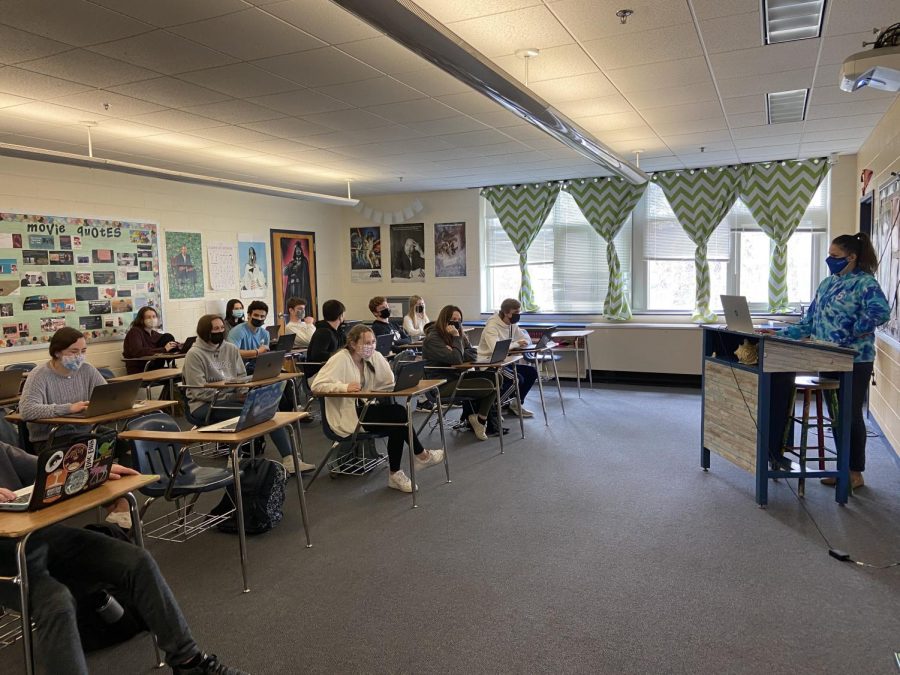Teaching During a Pandemic: Adjusting and Accommodating
June 9, 2021
The pandemic has caused a plethora of hardships for many people in the Scituate community, across the nation, and across the globe. Doctors, nurses, and other essential workers have made countless sacrifices during the most unprecedented times of the pandemic. However, the hard work of SHS teachers during the pandemic cannot be overlooked. During the spring of 2020 when Scituate Public Schools closed in-person learning, SHS teachers proved to be flexible and versatile as they explored new methods of teaching their students remotely.
When asked about the most challenging adjustment they had to make, many teachers agreed that switching to online instruction and scheduling time with both remote and in-person students was extremely challenging. English teacher Cathy Hall referred to this year as a “Rubik’s Cube,” as she learned how to “puzzle together so many different lessons for different groups of students.”
For the three quarters of the school year, students were divided into three cohorts: Cohort A, Cohort B, and Cohort C. Cohort A and B would alternate between attending school in person for half the week, while Cohort C students remained fully remote all week. Math teacher Phill Blake found it was difficult to balance teaching between “different audiences.”
While the majority of teachers taught both synchronously and asynchronously, many teachers found it challenging to “meaningfully engage” students, as SHS math teacher Kerri Hallihan explained.
Teachers also felt as if they were unable to properly teach important skills to students. Many also found that their new teaching styles caused them to prioritize organization which led them to spend more time on preparation than they had to in the past.
When Hall noticed that students would often wait until the last minute to join her Google Meet, she started awarding the first student with a piece of candy when they attended in-person. Similarly, English teacher, Anne Blake, had students create a class playlist; each student would recommend a song to add to a playlist to listen to during independent work times. To loosen up the class, Blake also included “a few more Britney Spears GIFs than usual.”
Music Department Chair and band director, Jim Thomas, said the year has been filled with “many challenges and opportunities.” The band program discovered new ways to assess students, like using the video recording platform Flipgrid and recording virtual performances using Bandlab. Although Thomas was “proud of how [his] team problem-solved in an ever-changing environment,” he is looking forward to live concerts and interacting with students more in the future.
The iExcel Program at SHS experienced a myriad of changes as well. Special Education Teacher Gail Varrasso said this year taught her that combining Google Classroom with online videos is effective, and she will use this format in the future. iExcel students spent more time doing outdoor activities and interacting with the school community.
Art teacher Julie Hickey felt she endured two punches: communicating with students while splitting her attention between in-person and remote learners. She said these two “punches” made it challenging to “build respectful, working relationships with [her] students and create a sense of community within the classroom.” She called the adjustments she had to make “band-aid adjustments.” To allow for students to appreciate their peers’ artwork, Hickey used the online platform Padlet to create digital artboards, allowing her students to give peer feedback. Hickey looks forward to seeing everyone in person again–she misses “everyone’s smile the most.”
Teachers were rightfully overwhelmed by all the changes; however, most agreed they would continue the new strategies they developed. Family and Consumer Science teacher Jennifer Wade-Baker said this year “taught me I can do anything.”
